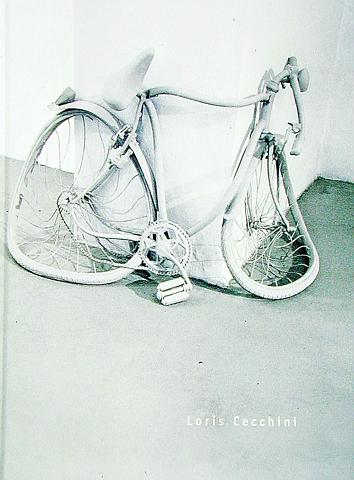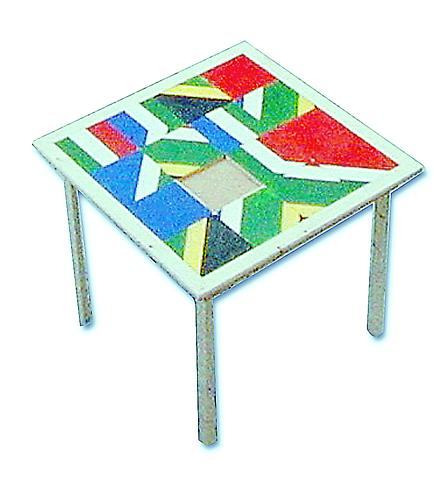With 31 artists from 20 countries set to participate in the upcoming Taipei Biennial, the city art scene is set to show its sophistication and diversity. And to let the global art community know that it's come a long way since hosting a more limited biennial in 1998.
Organized by the Taipei Fine Arts Museum, the festival will jump outside the limited East Asian scope of its predecessor, dubbed "Site of Desire." The effort of the Taipei museum to broaden and reach out has always been a goal of its management, which has continually pursued making the museum an international contender.
Acclaimed curator Jerome Sans from Paris and Taipei based Manray Hsu (徐文瑞) started to work on the project in February and have spent NT$24 million. Sans is the co-director of the Palais de Tokyo in Paris and adjunct curator at the Institute of Visual Arts in Milwaukee, Wisconsin. His coming on board was a much-anticipated blessing by local arts circles, especially since he contributed to the 1999 Venice Biennale. Hsu, on the other hand, is a local curator and art critic, a rising star who has nurtured the developing contemporary art scene in Taiwan.

PHOTO: TAIPEI FINE ARTS MUSEUM
The curators, a group of advisors from local arts circles, and the professional staff of the museum have worked together to select the 31 artists from around the globe. In general, they looked for artists that are futuristic and international in scope. Those who dare venture into technology, for example, are valued for their experimentation with the digital world.
The two curators finalized the theme of "The sky is the limit" in June. It's a wide open world under the sky and the implication is that there are all kinds of possibilities, infinite and boundless. The theme is tied into the timing of crossing into the new millennium. Curator Sans stressed the word hybrid in shaping a new world. The show will be small scale and intimate, yet it will also follow a theme of globalization.
The curators said that they want this occasion to be a forum to showcase the collective experiences of the participating artists and audiences. The sense of novelty is strong and the curators promised to "create a lab where actions and fantasies can be put into experimentation."

As the biennial attracts locals and foreign visitors alike, there is certain to be discussion about how such an event can serve to develop the Taiwan arts. Already people have questioned the residual impact of such a large-scale, costly venture in an attempt to determine its contribution to the growth of contemporary art in Taiwan, which is still not adequately developed, said Rita Chang (張元茜), independent curator and Taipei representative of Asia Culture Council.
Chang also pointed out that what's essential is that peripheral facilities have to be built to establish a sound environment for contemporary art, with the biennial serving as a catalyst.
Another benefit of the biennial is the increased media attention, as hundreds of arts writers and critics descend upon Taipei to cover the event. And what they will see is a more vibrant scene than a few years back. Venues such as the Washang Cultural District, an alternative space, have started putting together better exhibitions as support for contemporary art increases and can serve as side-stops for visitors to the biennial.

The Taipei Contemporary Art Museum is also scheduled to open early next year, which means debates and activities will abound this year to prepare for it. And the Taipei Fine Arts Museum itself will schedule two fascinating shows alongside the biennial. "Zero-in," curated by Chang, celebrates the new millennium and probes into the e-era, and "Taipei Chinese Chess" is a solo exhibition of Ren Rong, a Chinese artist using paper art and installation to make humanlike creatures that examine the relationship between nature and man.Participating artists
Candice Breitz (South Africa)
Hsia-fei Chang (Taiwan)

Shu-lea Cheang (Taiwan)
Loris Cecchini (Italy)
Claude Closky (France)
Meschac Gaba (Benin)
Kendell Geers (South Africa)
Gim Hongsok (South Korea)
Hanayo (Japan)
Hung Dung-lu (Taiwan)
Kim Soo-ja (South Korea)
Surasi Kusolwong (Thailand)
Kyupi Kyupi (Japan)
Lee Ming-wei (Taiwan)
Mark Lewis (Canada)
Michael Lin (Taiwan)
Liza Lou (USA)
Michel Majerus (Germany)
Jonathan Monk (United Kingdom)
Daniel Pflumm (Germany)
Henrik Plenge Jakobsen (Denmark)
Navin Rawanchaikul (Thailand)
Tobias Rehberger (Germany)
Sidney Stucki (Switzerland)
Pascale Marthine Tayou (Cameroon)
Uri Tzaig (Israel)
Wang Du (China)
Wang Jun-jieh (Taiwan)
Wang You-shen (China)
Erwin Wurm (Austria)
Jun'ya Yamaide (Japan)

This month the government ordered a one-year block of Xiaohongshu (小紅書) or Rednote, a Chinese social media platform with more than 3 million users in Taiwan. The government pointed to widespread fraud activity on the platform, along with cybersecurity failures. Officials said that they had reached out to the company and asked it to change. However, they received no response. The pro-China parties, the Chinese Nationalist Party (KMT) and Taiwan People’s Party (TPP), immediately swung into action, denouncing the ban as an attack on free speech. This “free speech” claim was then echoed by the People’s Republic of China (PRC),

Exceptions to the rule are sometimes revealing. For a brief few years, there was an emerging ideological split between the Democratic Progressive Party (DPP) and Chinese Nationalist Party (KMT) that appeared to be pushing the DPP in a direction that would be considered more liberal, and the KMT more conservative. In the previous column, “The KMT-DPP’s bureaucrat-led developmental state” (Dec. 11, page 12), we examined how Taiwan’s democratic system developed, and how both the two main parties largely accepted a similar consensus on how Taiwan should be run domestically and did not split along the left-right lines more familiar in

Specialty sandwiches loaded with the contents of an entire charcuterie board, overflowing with sauces, creams and all manner of creative add-ons, is perhaps one of the biggest global food trends of this year. From London to New York, lines form down the block for mortadella, burrata, pistachio and more stuffed between slices of fresh sourdough, rye or focaccia. To try the trend in Taipei, Munchies Mafia is for sure the spot — could this be the best sandwich in town? Carlos from Spain and Sergio from Mexico opened this spot just seven months ago. The two met working in the

Many people in Taiwan first learned about universal basic income (UBI) — the idea that the government should provide regular, no-strings-attached payments to each citizen — in 2019. While seeking the Democratic nomination for the 2020 US presidential election, Andrew Yang, a politician of Taiwanese descent, said that, if elected, he’d institute a UBI of US$1,000 per month to “get the economic boot off of people’s throats, allowing them to lift their heads up, breathe, and get excited for the future.” His campaign petered out, but the concept of UBI hasn’t gone away. Throughout the industrialized world, there are fears that